For people who travel with big luggages but plan to visit different towns as many as possible, it is much easier to send them via local courier - usually known as 'takyubin/takuhaibin'. Which was what we did. All we had to do was to ask one of the waitstaffs at the reception (they all could speak decent english, thank God), and they filled in the necessary form for us. We would be sending the big suitcases ahead of us to Takayama, where we will be staying in two days time.
When we left Uji, it wasn't raining anymore, but the river was almost overflowing...

So off we went to JR Uji station with much lighter load, where we bought the train ticket to JR Takaoka. The ticket costed JPY 5080 per person - from JR Uji, alight at JR Kyoto then transfer to platform 0, where we had to take Limited Express Thunderbird Train for 2 1/2 hours all the way to Takaoka. Then go to the bus terminal to take Kaetsuno bus. There are two kinds of buses that go to Ainokura from Takaoka - Regular & Shuttle. The regular bus is green in color, and the shuttle bus is called 'world heritage bus' and is bigger in size. When we arrived, the next bus to came was shuttle bus and the fare cost was JPY 1000 per person.
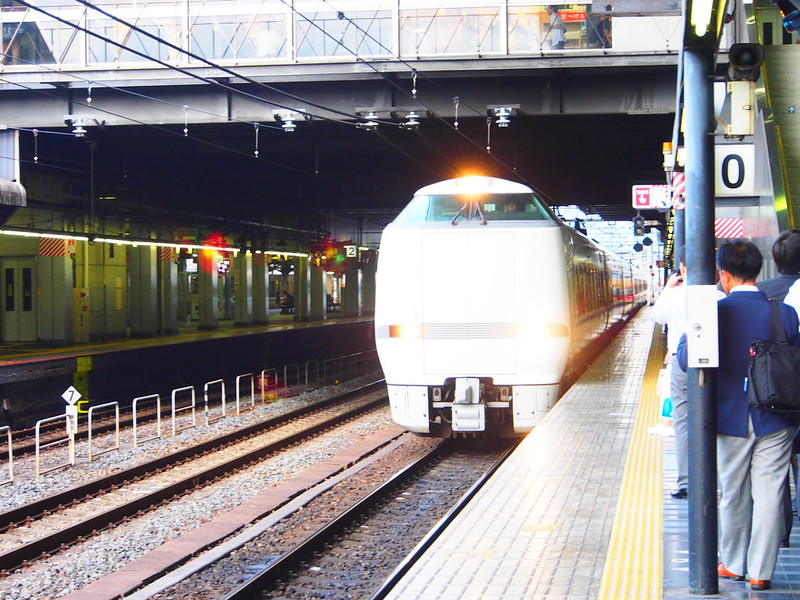
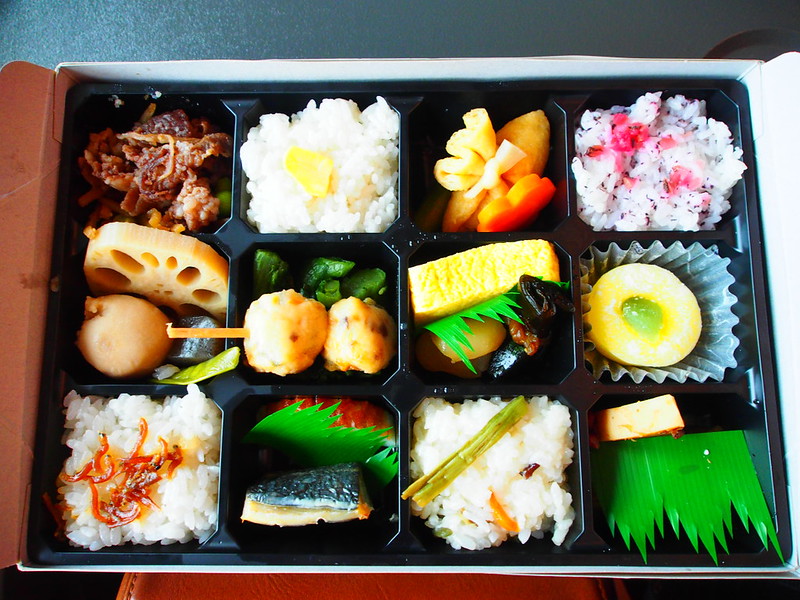 |
| Ekiben bought at JR Kyoto station. |
The scenery gradually changed from concretes of the city...
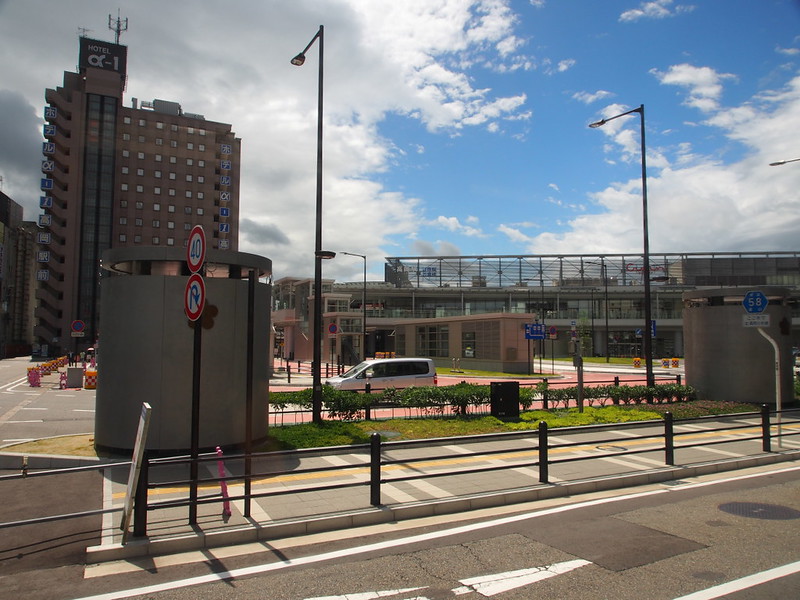
To greeneries of the mountains... .
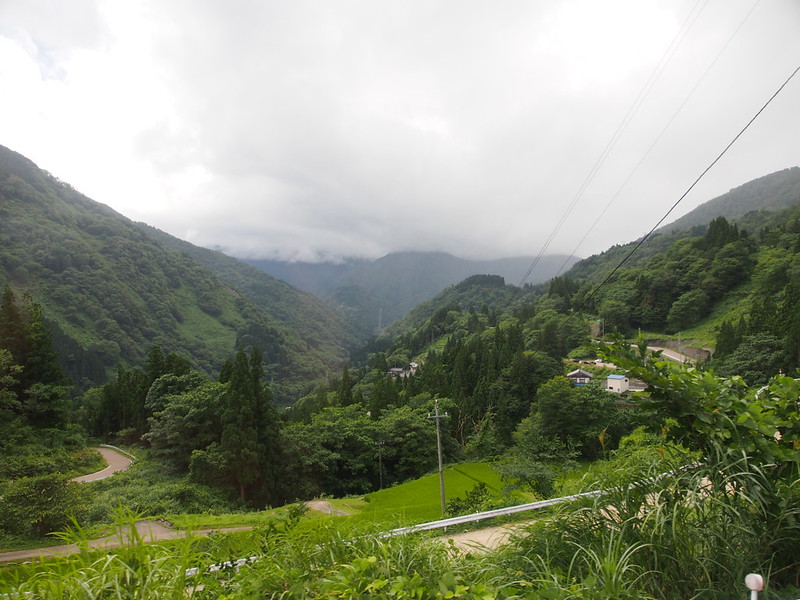
Then we alighted at Ainokura bus stop.
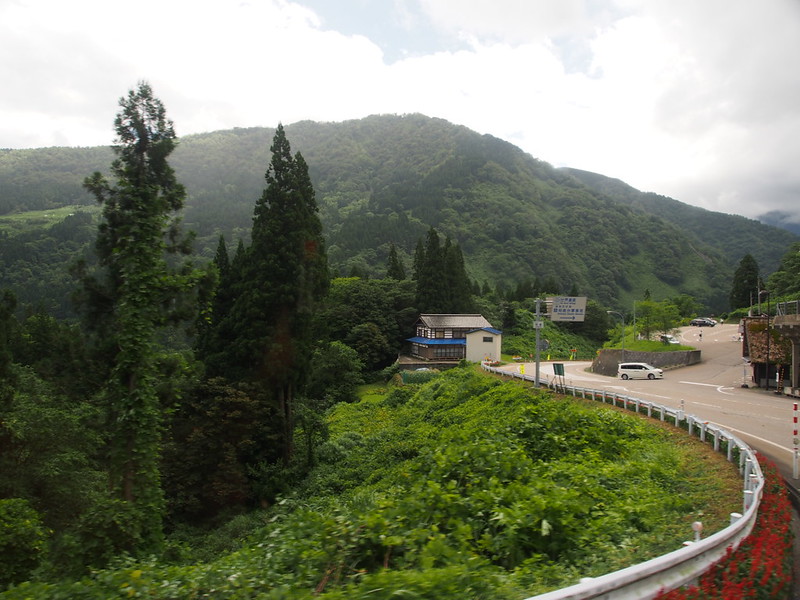
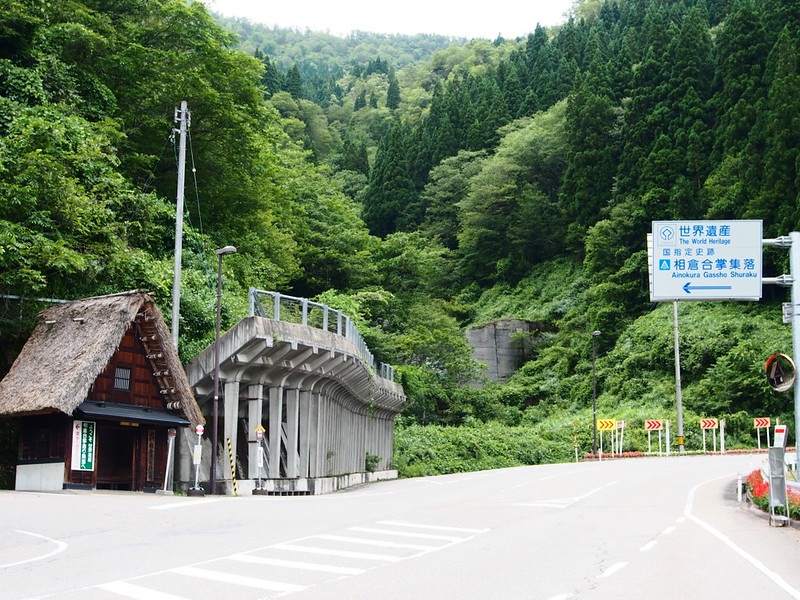
Words cannot describe the beauty of this place. It's like stepping back in time where all that we need is peace and nature.
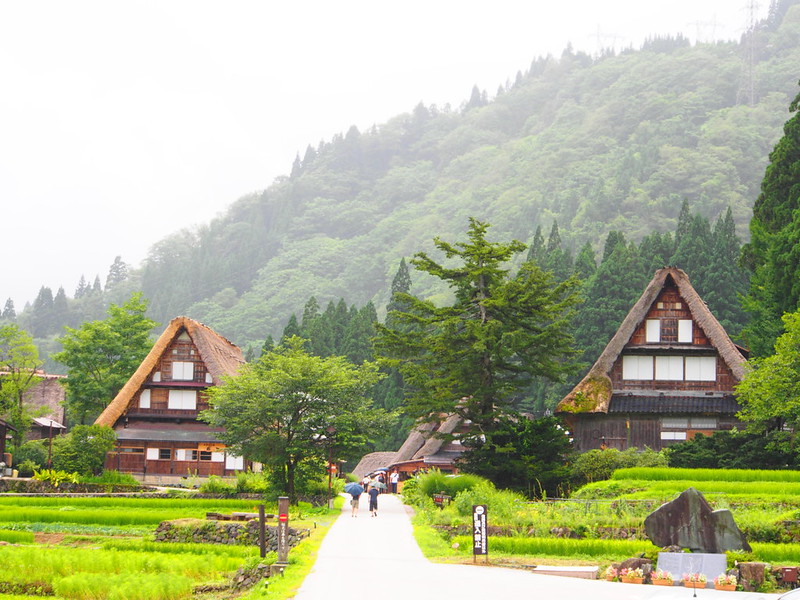
It was actually pretty quiet, adding so much charm to this historical village. And the greens... oh the greens!! The vegetables and the paddy fields are thriving.
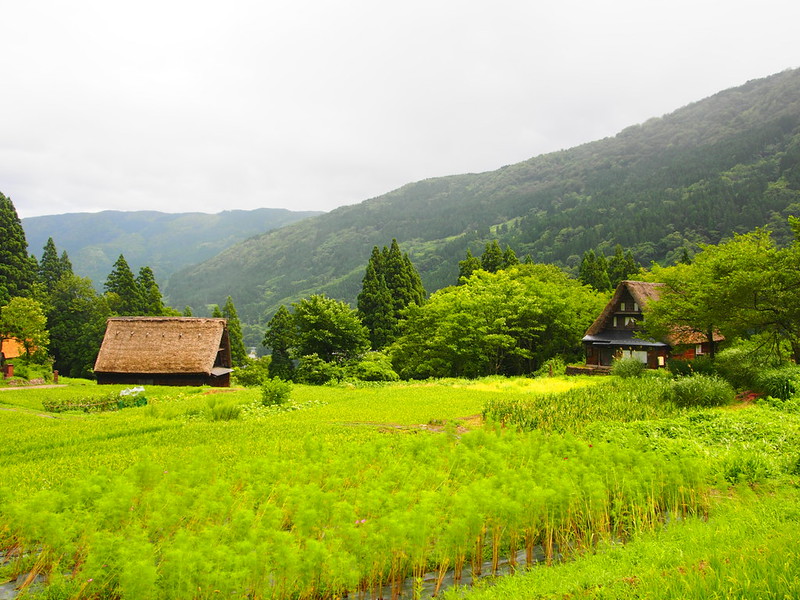
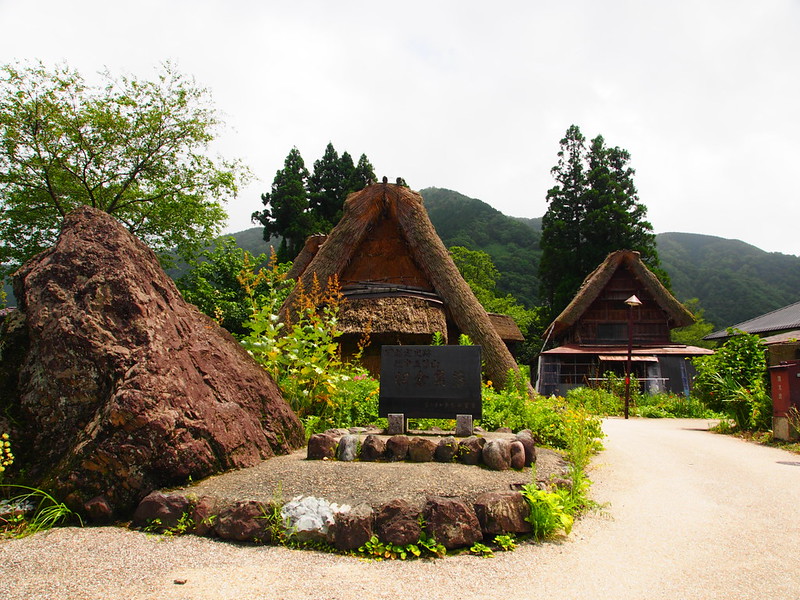
Lunch was at the two kiosks/restaurants available in this village (yes, because we were food goblins).
The first one was at Ainokuraya where we had a simple zarusoba (cold soba noodles - JPY700 ) and oden (JPY 400). The handmade soba was excellent, perfect bite, and was accompanied by the refreshing dipping sauce. Oden was nothing special, but it was quite a generous portion for 400 yen (Ok, Ok, I guess I am still comparing everything to overpriced Sydney).
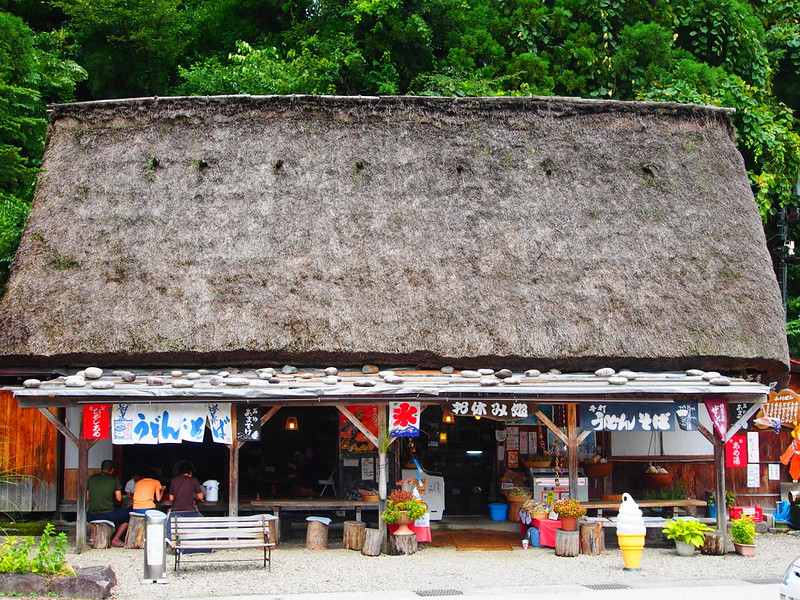
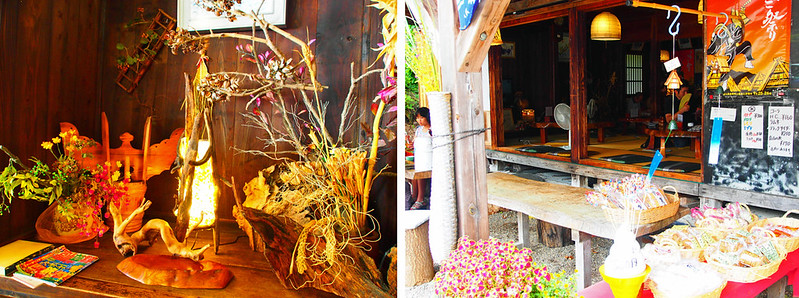
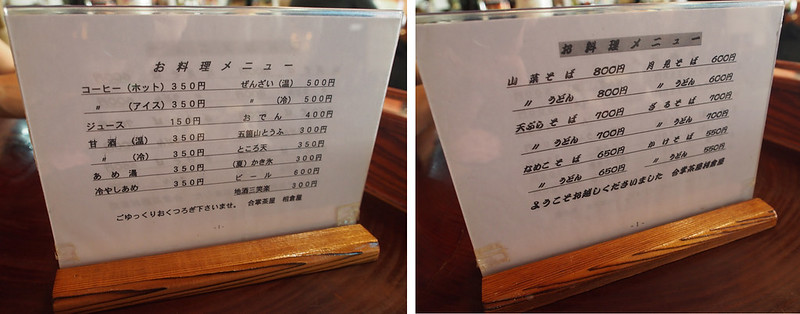
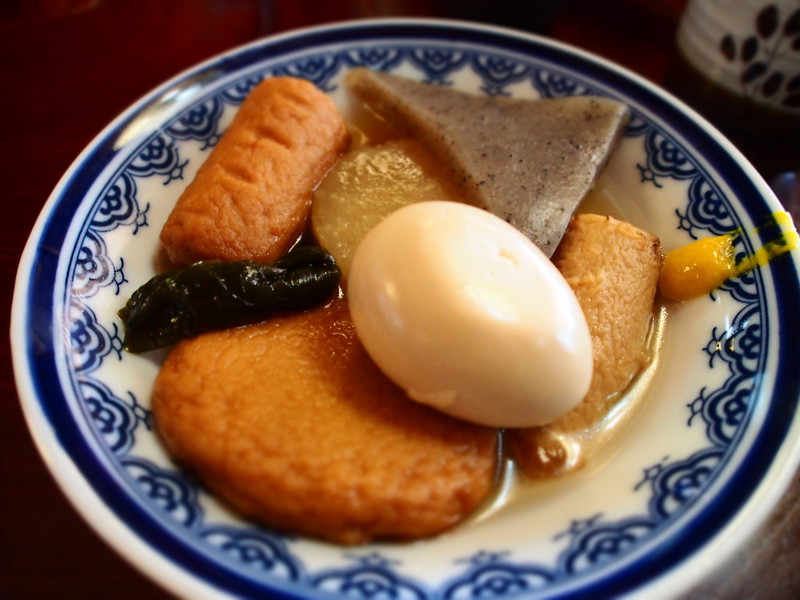
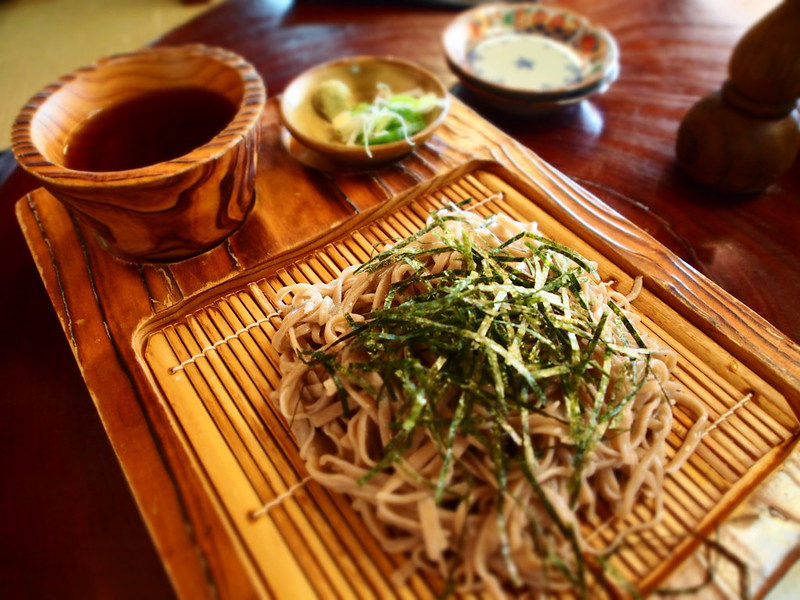
Then after walking around the village and when our bellies beckoned us to grant them second serving of lunch, we headed to Matsuya, where there were more selections of dishes and desserts. And mamamia - english menu! Always a blessing, especially accompanied with great visual pictures of the dish.
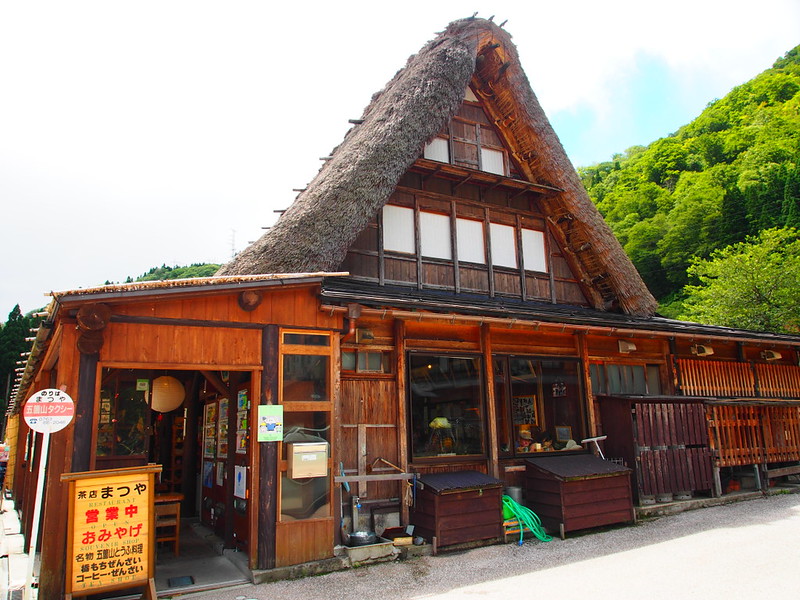
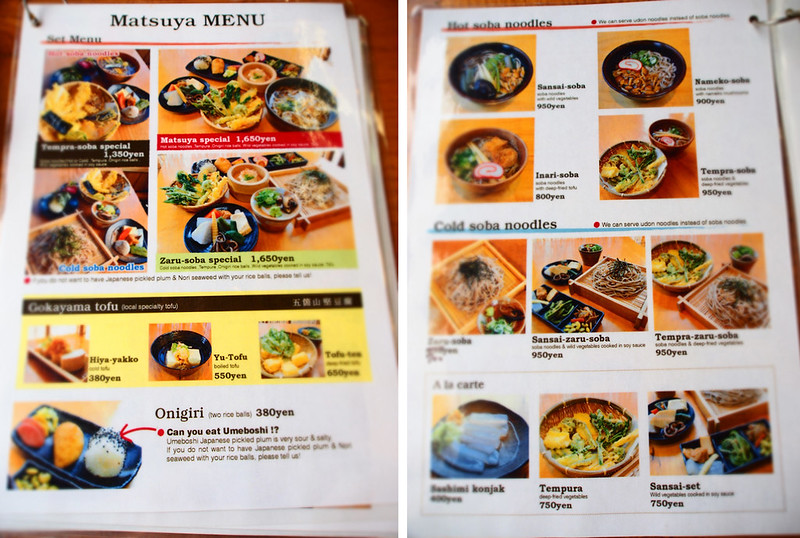
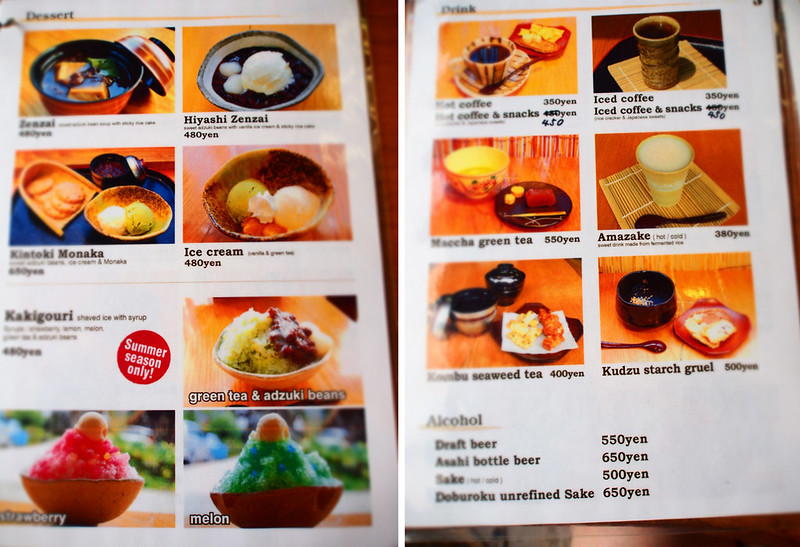
The Matsuya Special Set (JPY 1650) was awesome. OK, I'm so lacking in vocabulary for food appreciation... .
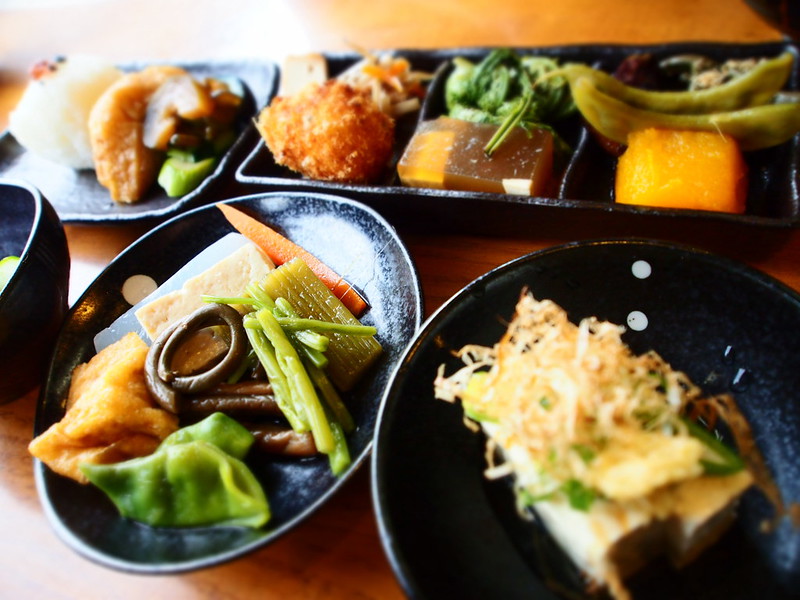
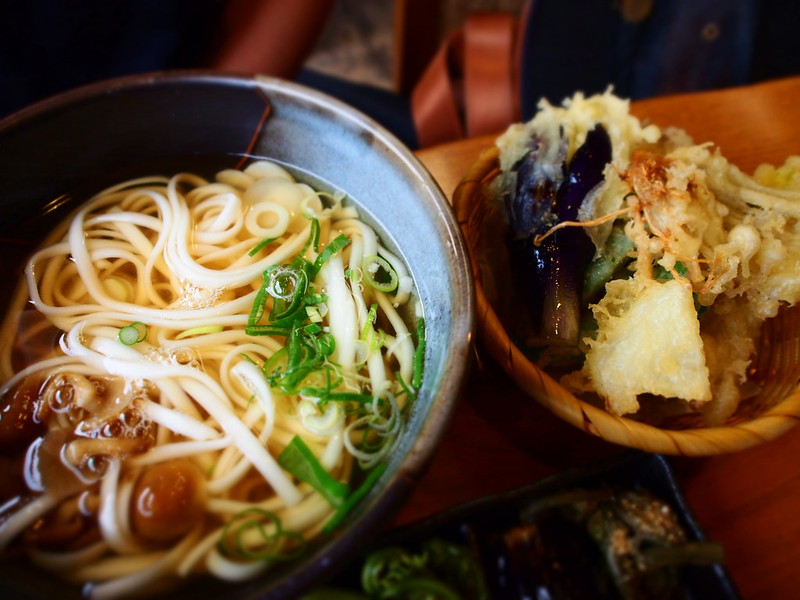
We opted udon instead of soba for the set, and the udon (also handmade) was also of excellent texture and had just enough bounce of good udon noodles. What shone through though - was the arrays of mountain vegetables and pickles that also comprised the set. Just the simplicity of the seasonings actually brought the natural sweetness of all the vegetables onwards and really worked on our appetite.
So hence, we ordered desserts: Zenzai (JPY 480) and Kintoki Monaka (JPY 650) (and a cup of Amazake JPY 380 - it's a sweet fermented rice drink). Especially loooved the Kintoki Monaka, where I certainly had fun to sandwich the ice creams and the sweet adzuki beans in between the thin wafers.
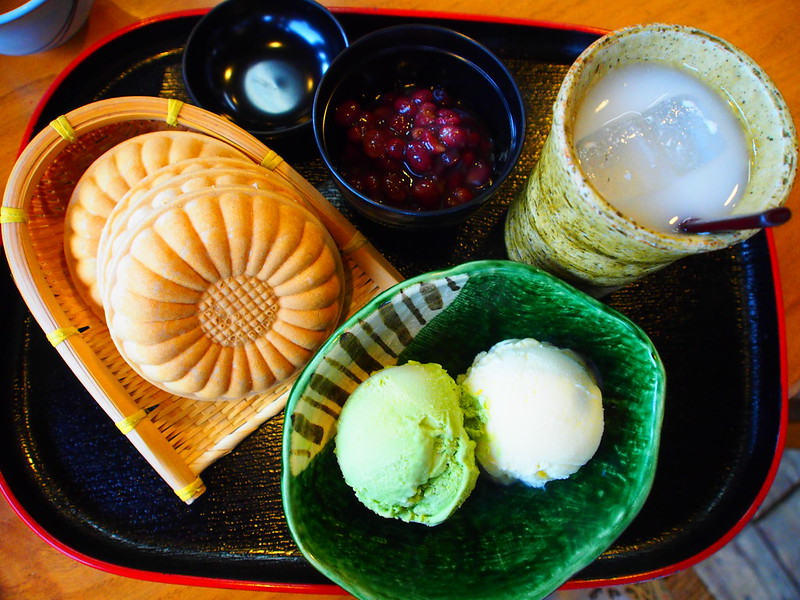
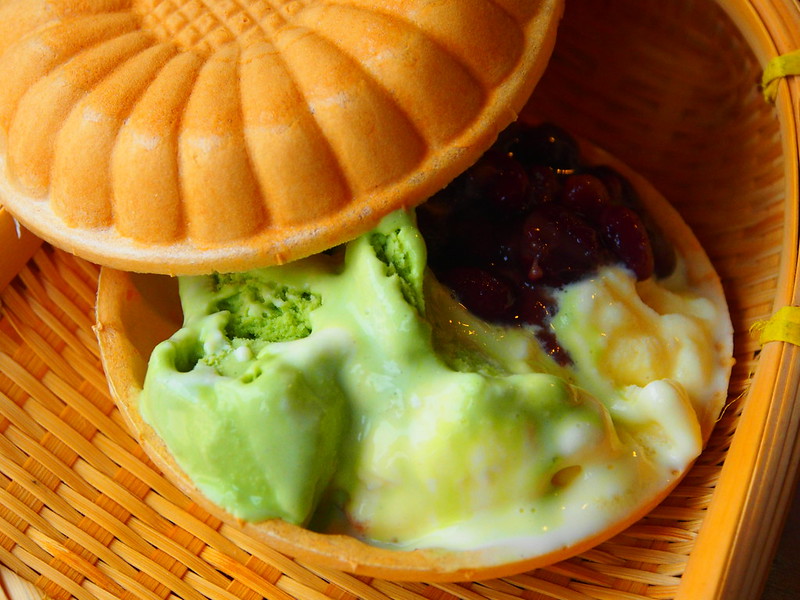
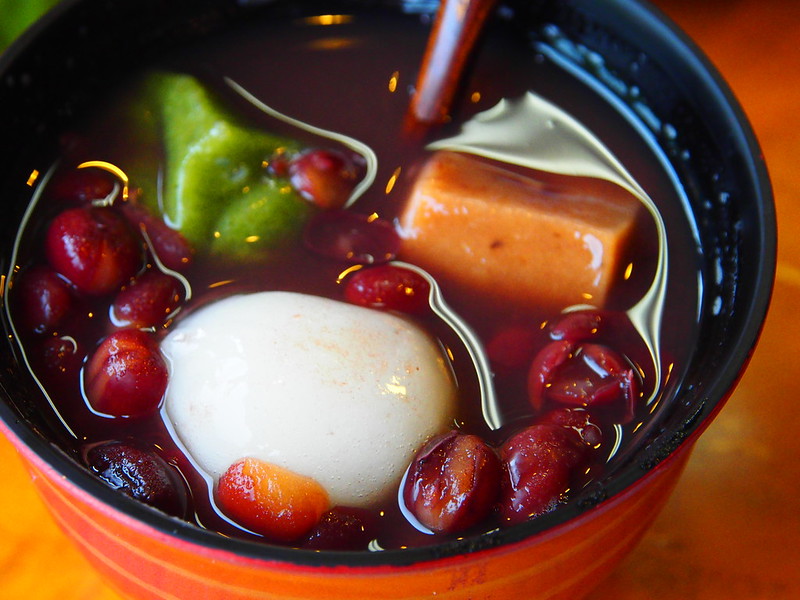
**--**
Without further ado, I will just spam you with more pictures of this lovely village.

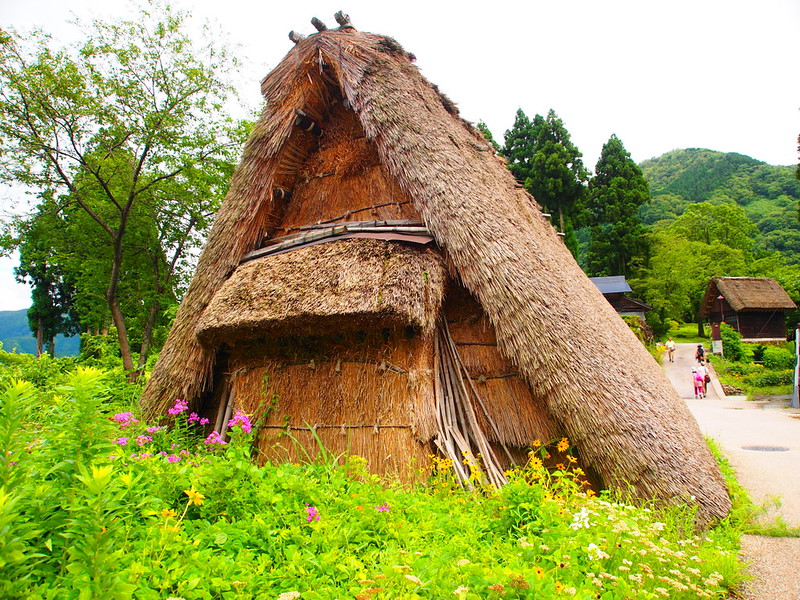
The villagers also grow a lot of vegetables and rice grains.
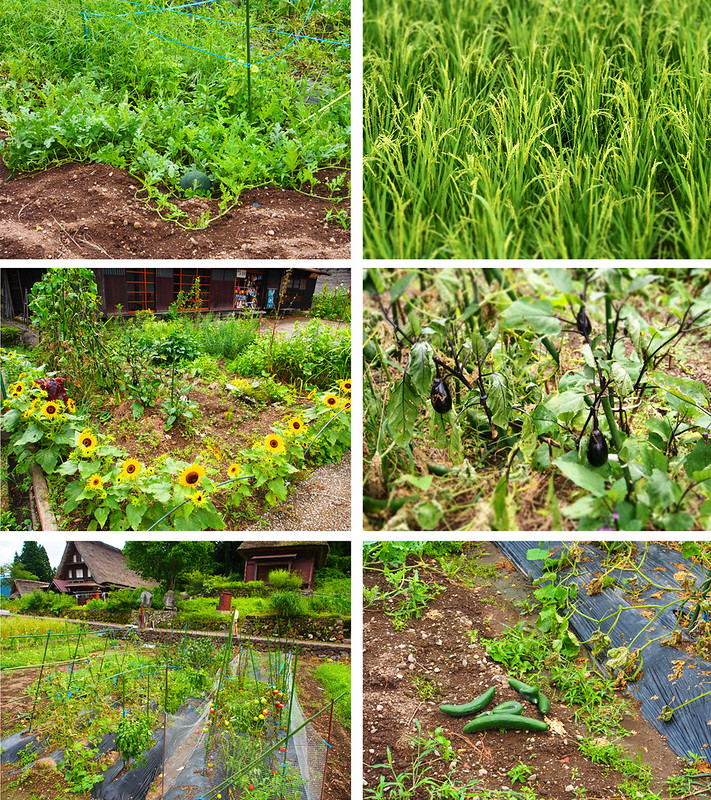
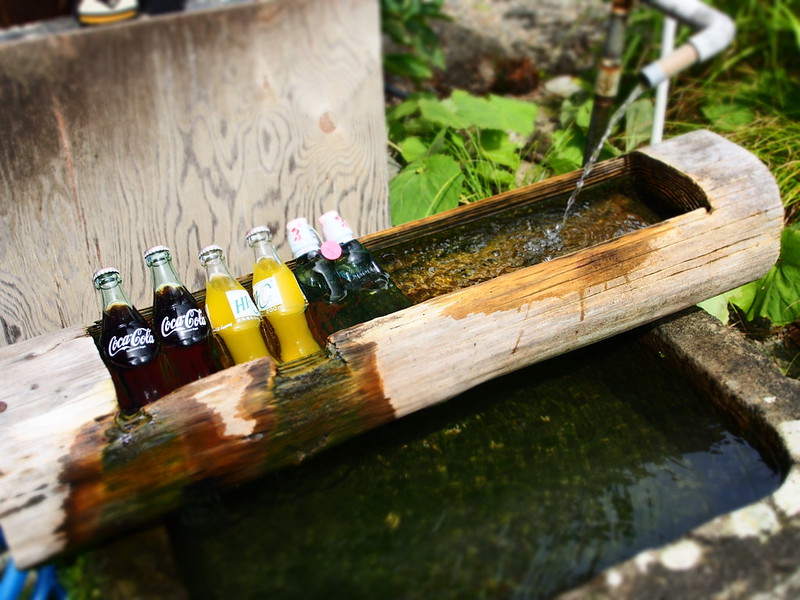
Some gassho houses serve as museums where for a small fee, you can see the inner structure of the house and information on how life and industry used to be in Ainokura.
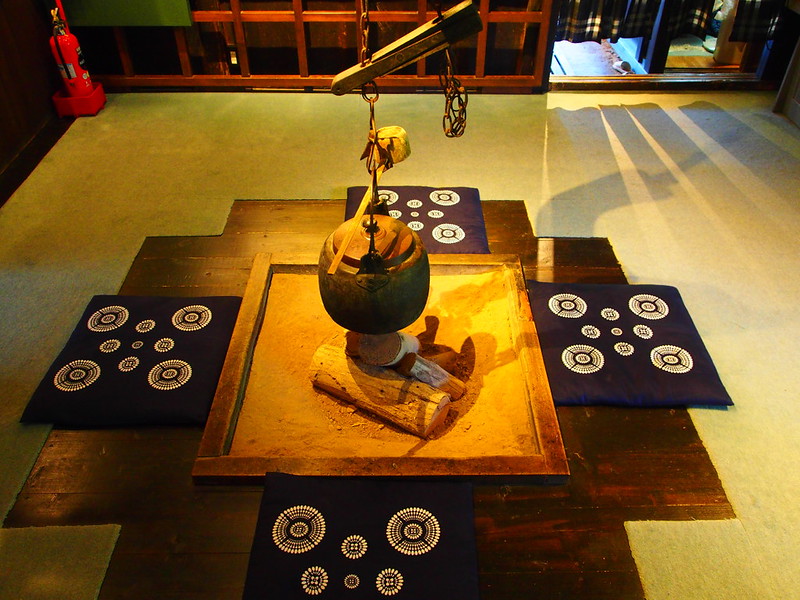
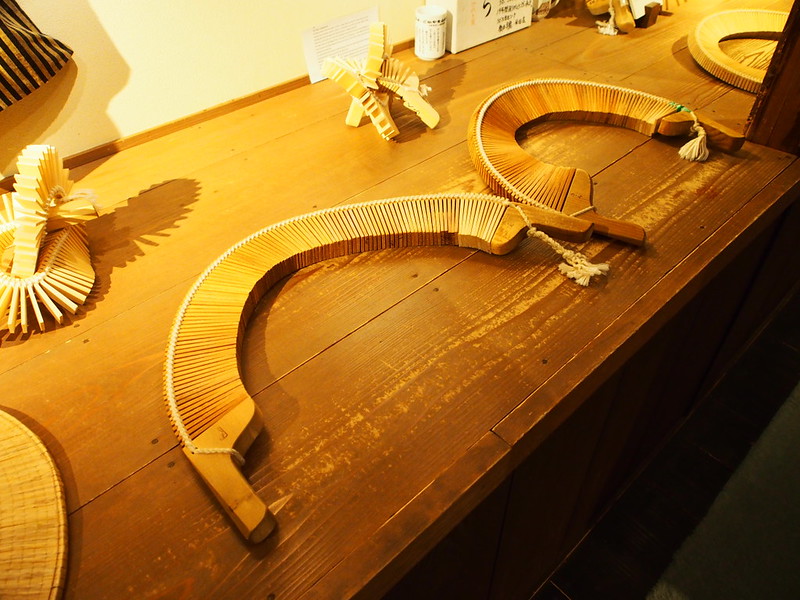
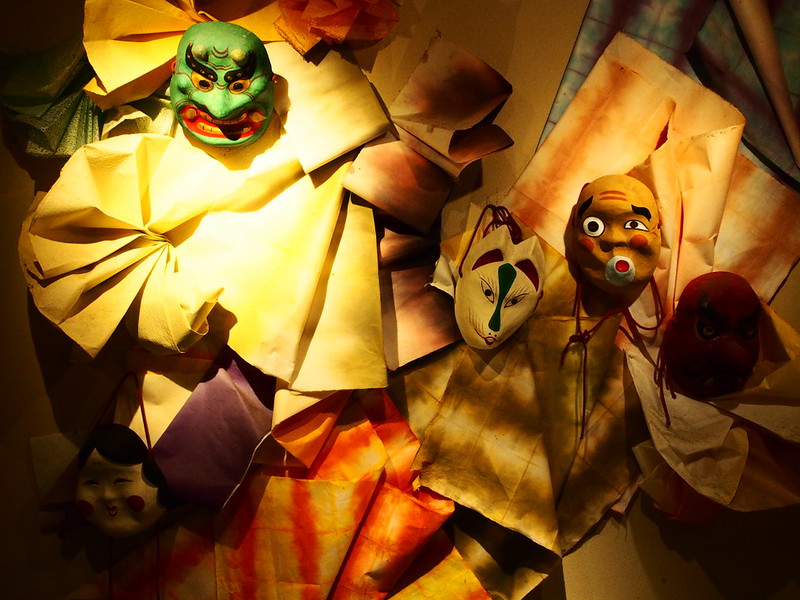
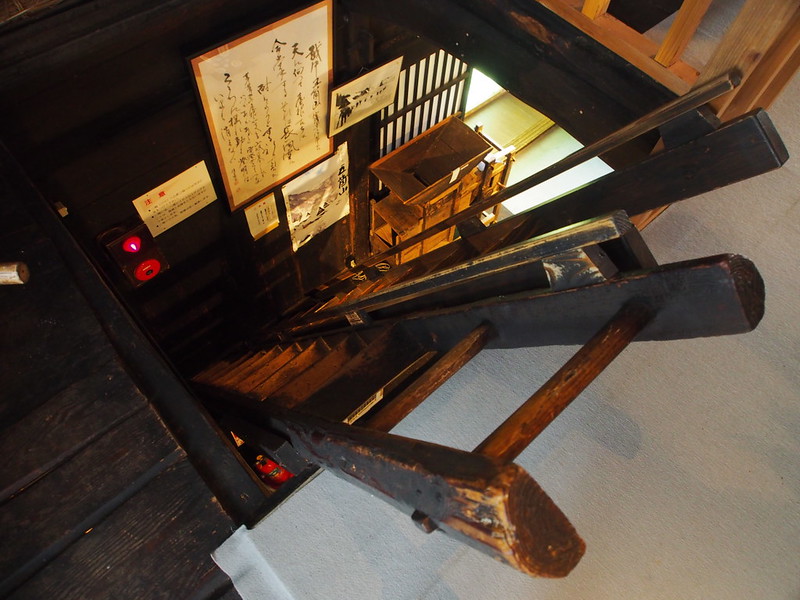
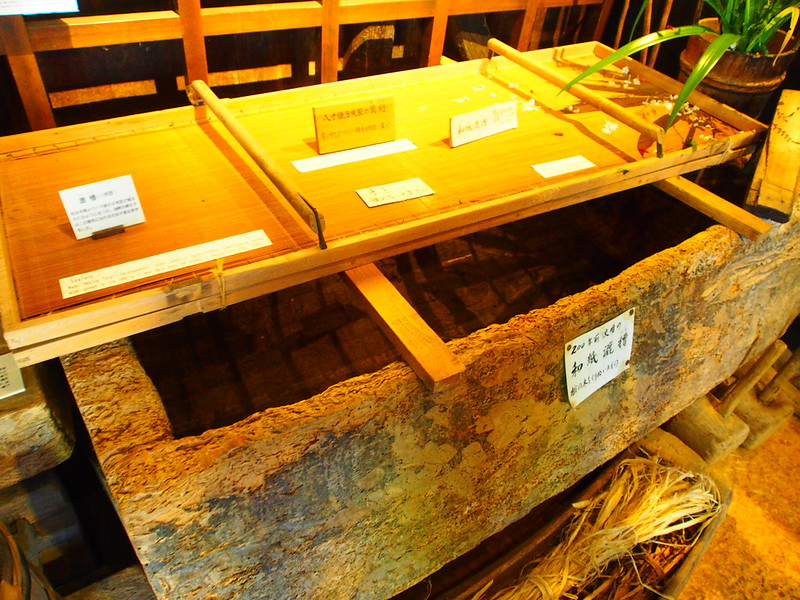
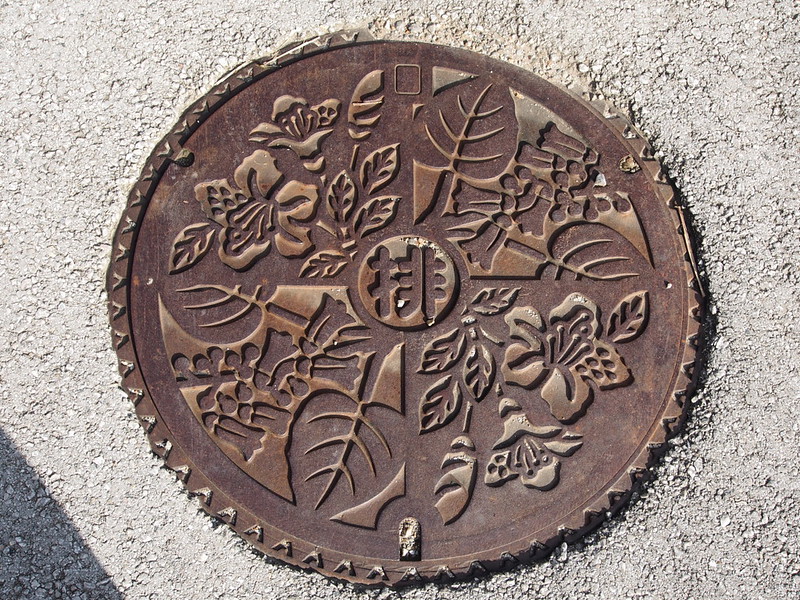 |
| manhole of ainokura |
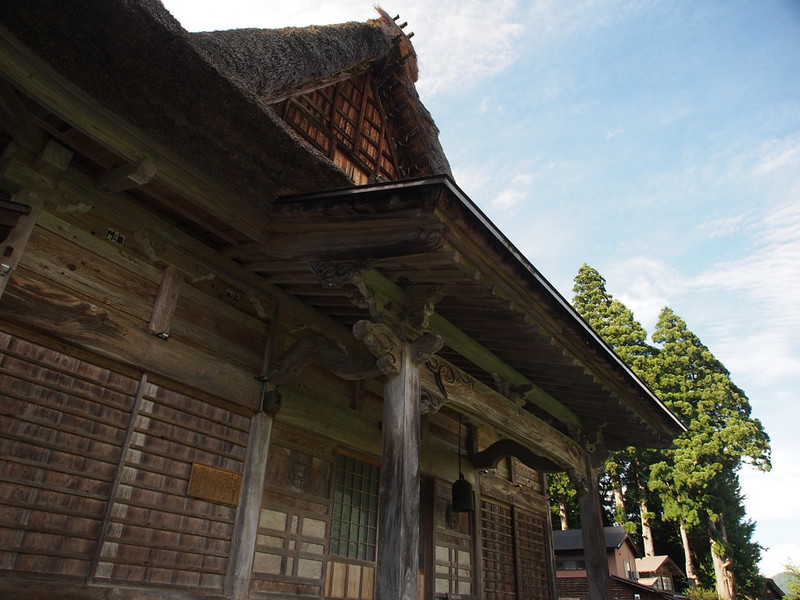
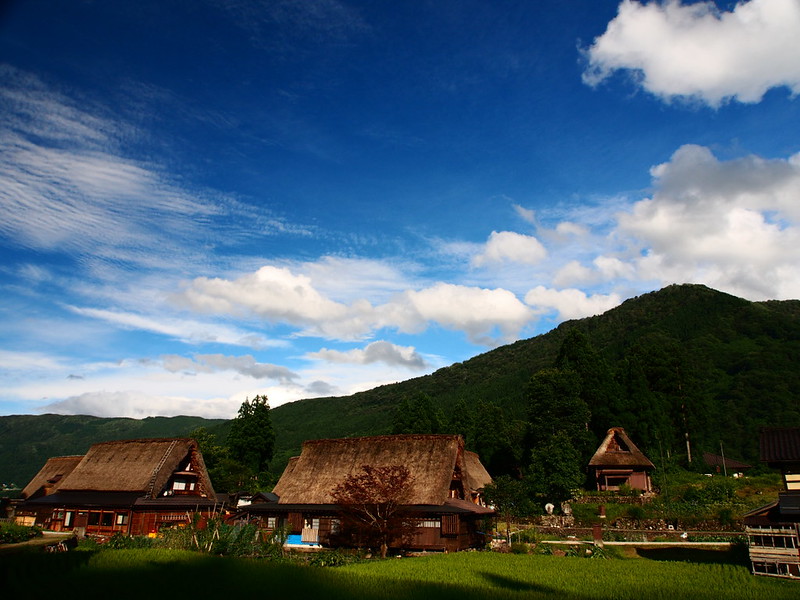
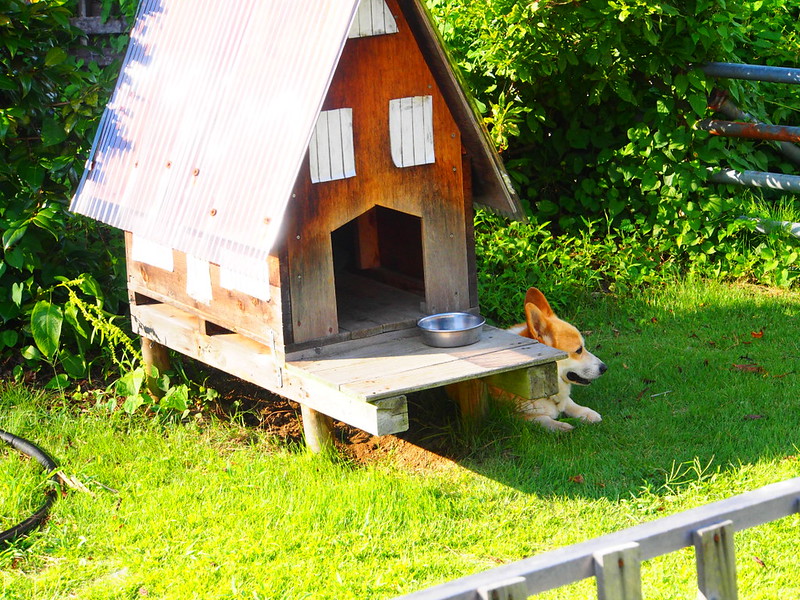
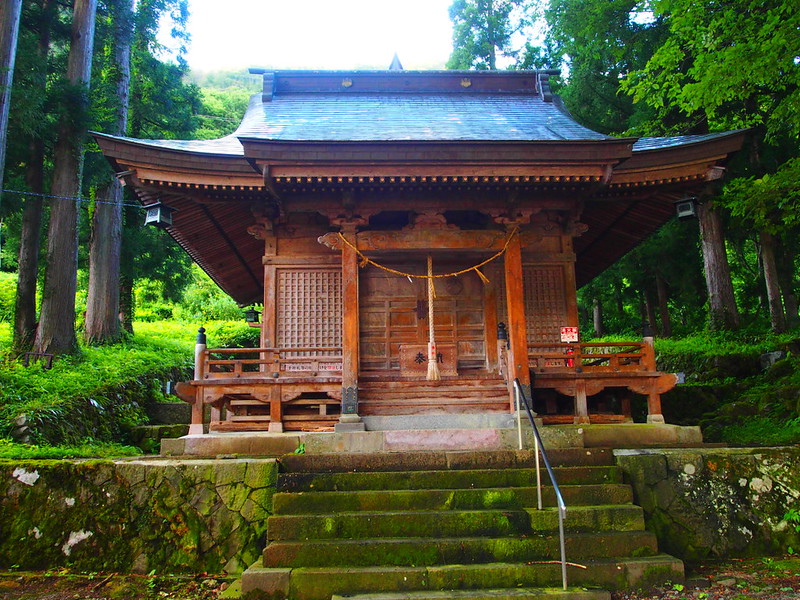
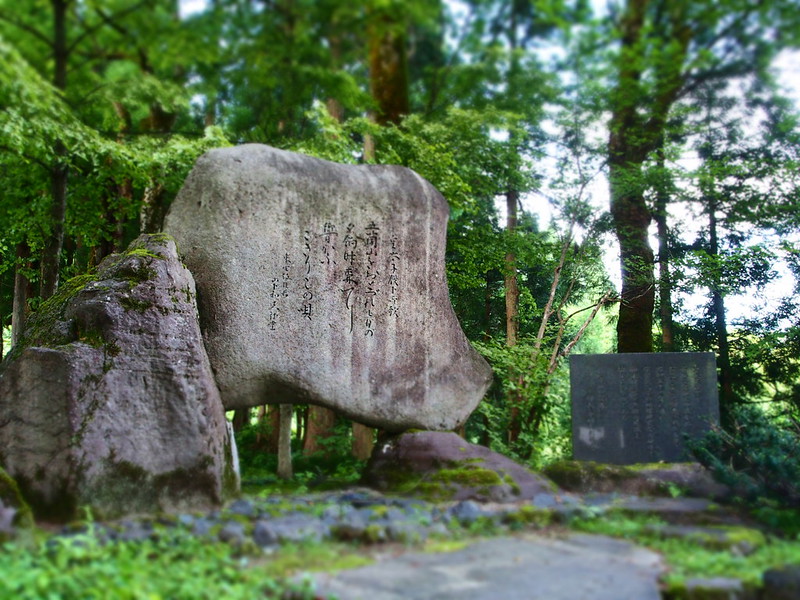
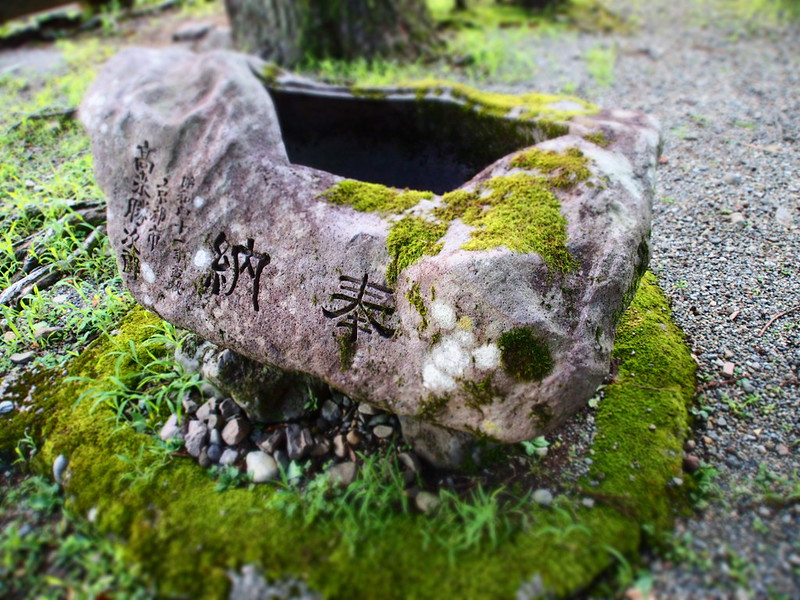
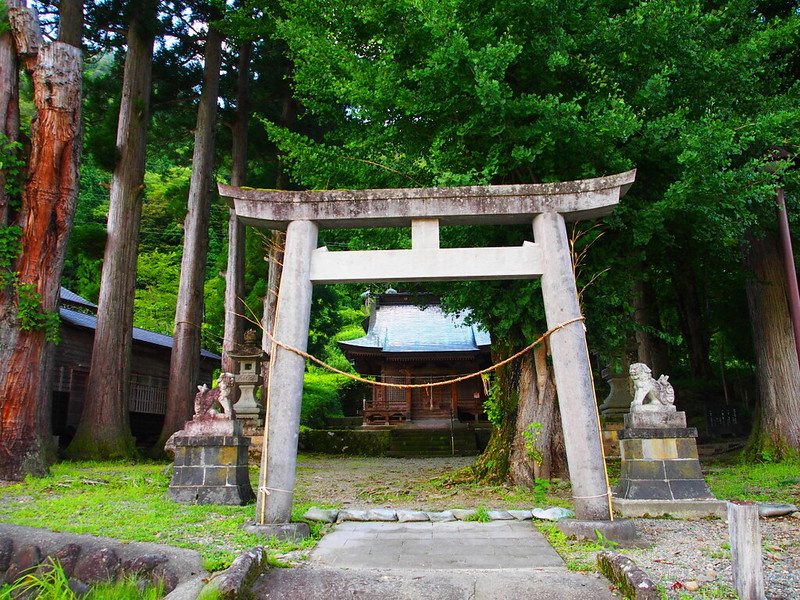
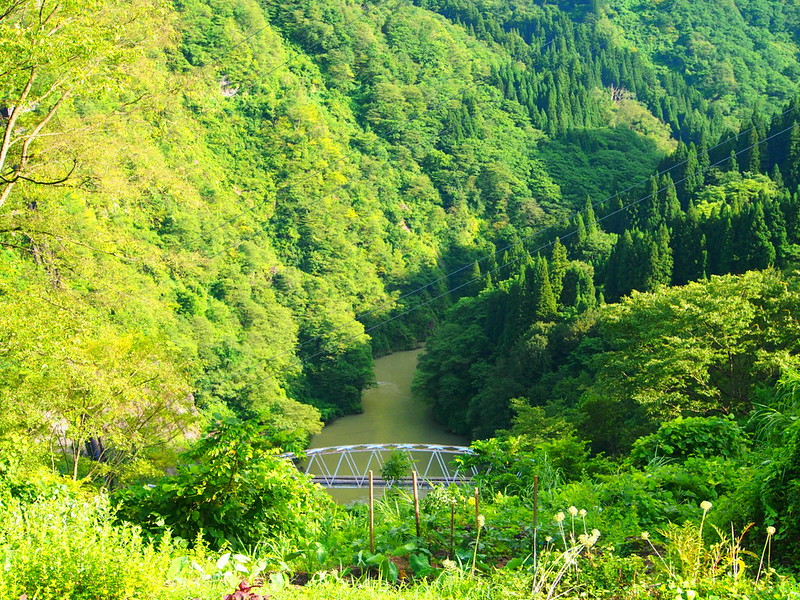
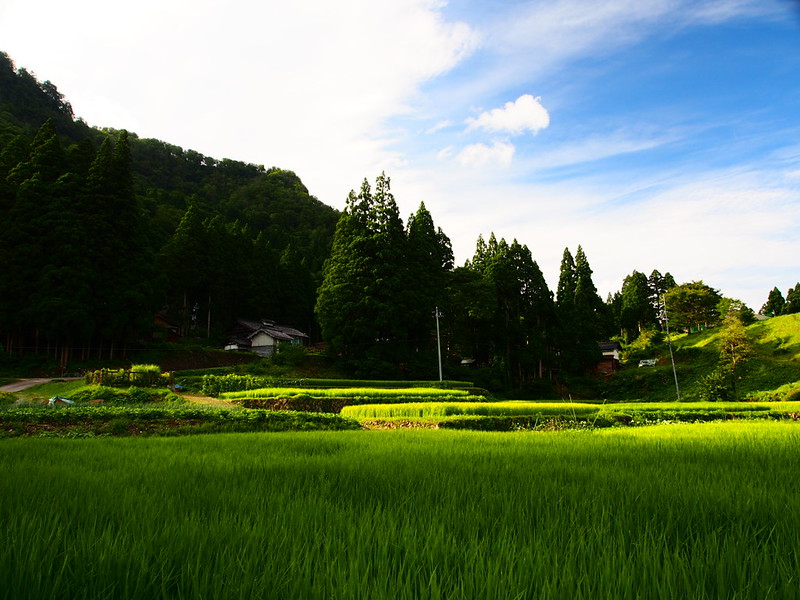
The village is quite small actually, and you can easily cover all grounds within 3 hours of very brisk walking. But may I recommend to actually stay the night in this town - at one of the authentic Gassho style houses available. Which brings us to my last review for the day:
**--**
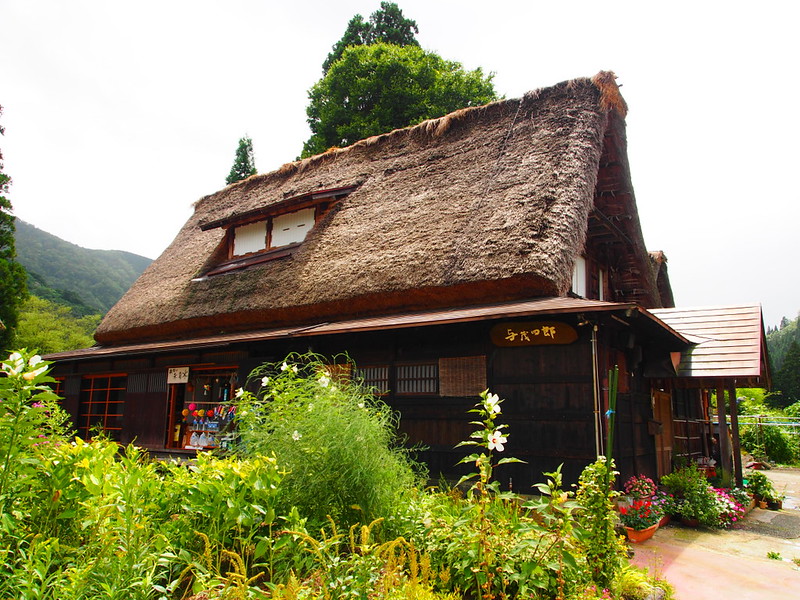
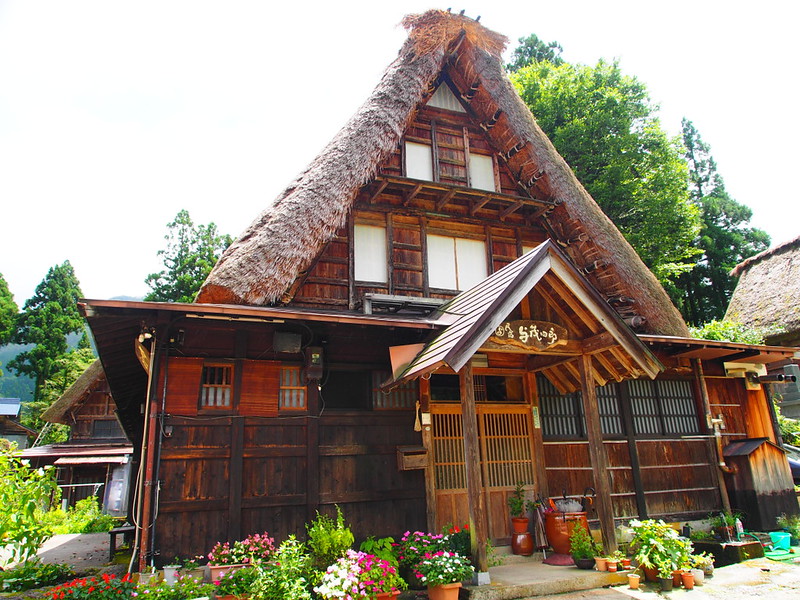
We booked for Yomoshiro through this website. The site also lists all the available accommodations in Ainokura. If you couldn't read japanese, best to send the tourist service centre with your choices of accommodation (email: mail@gokayama-info.jp). In my case, they were actually very quick in replying and booking process was finalized within a couple of days.
The fare we got is JPY 17600 (JPY 8800 per person) for the night, which includes dinner and breakfast. And at Yomoshiro, they provide free wi-fi, which was such a relief for me, because there is no wi-fi signal at all in Ainokura from my rented pocket wi-fi.
Room is basic japanese style, and there is no in-room private toilet or shower. Everything is very clean and provided for, though (toiletries, toothbrush, yukata, towels).
 |
| refreshment tea and snacks served when we checked in |
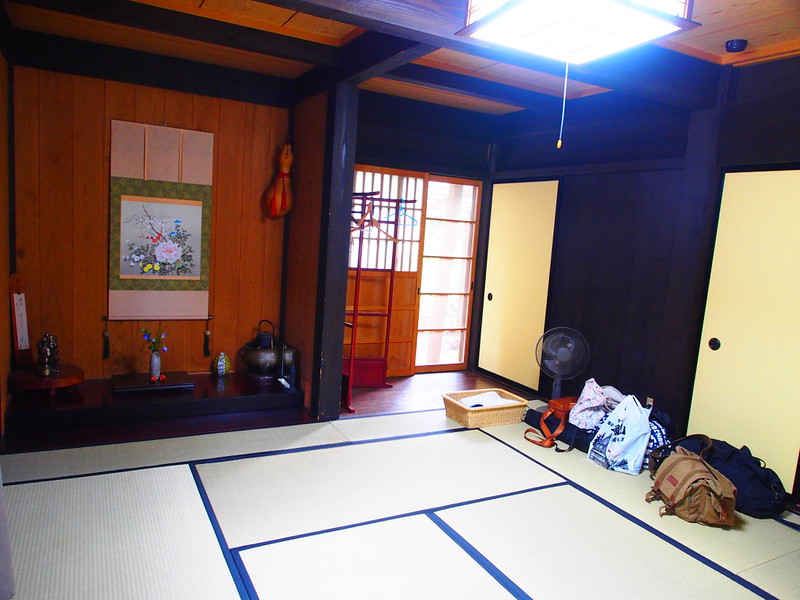
Dinner was amazing! (bored yet with my uninspiring review?), when we arrived at Yomoshiro around 5 p.m., we saw some fish being grilled at the hearth in the centre of the communal room, which was part of our dinner set.
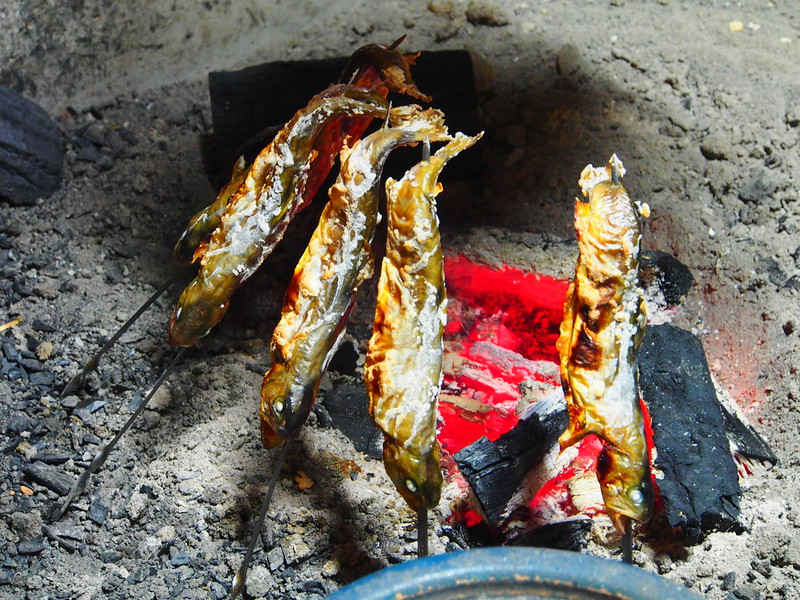
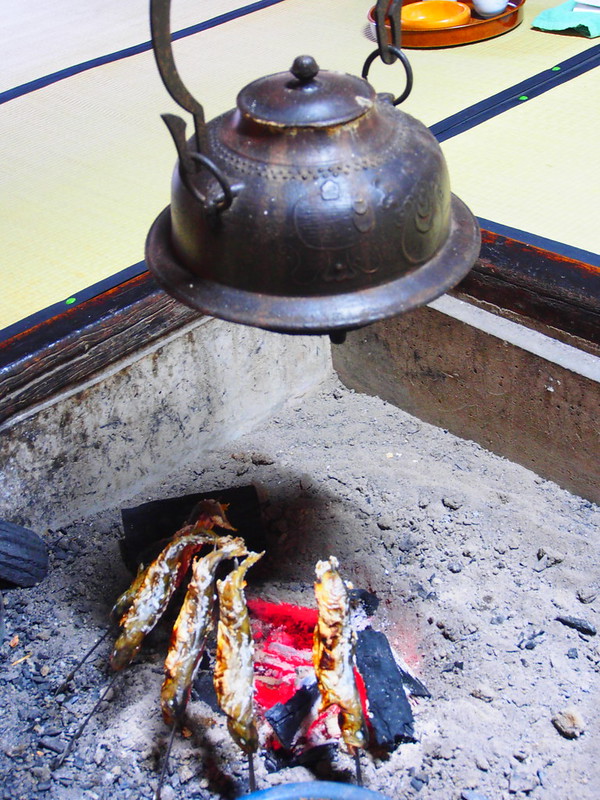
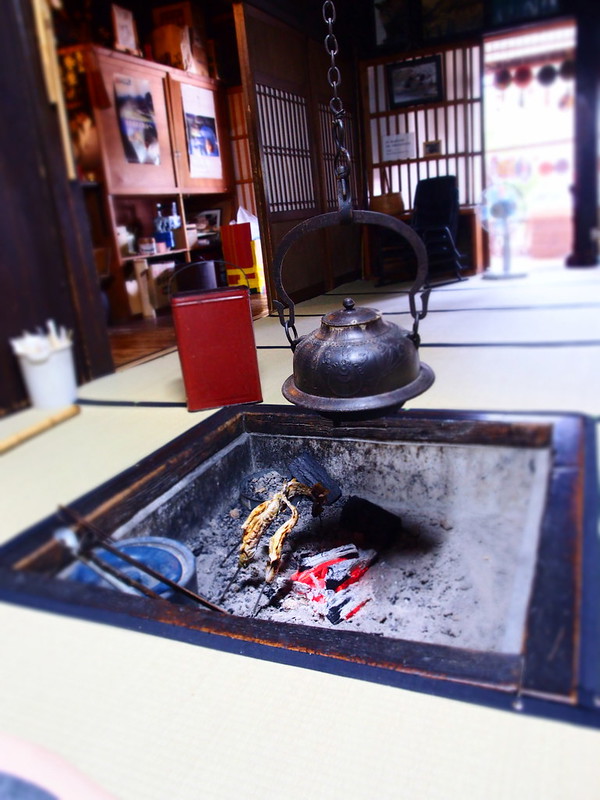
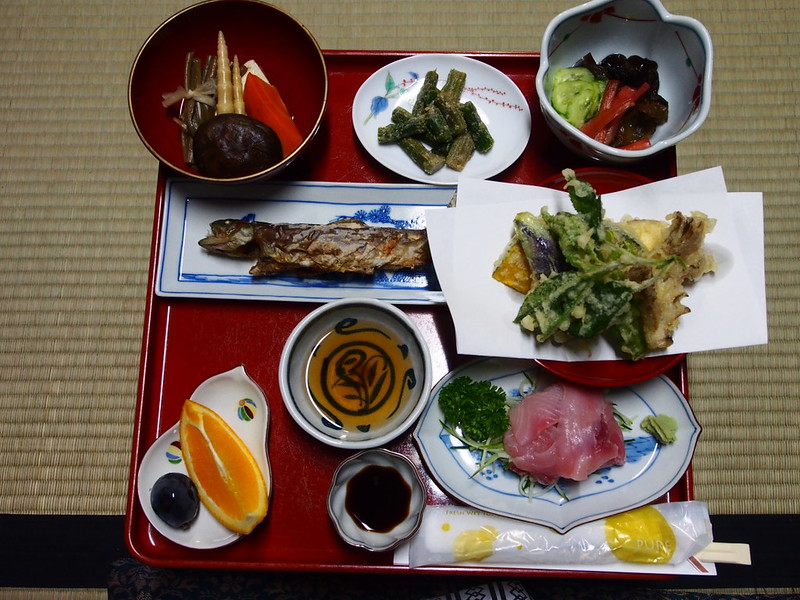
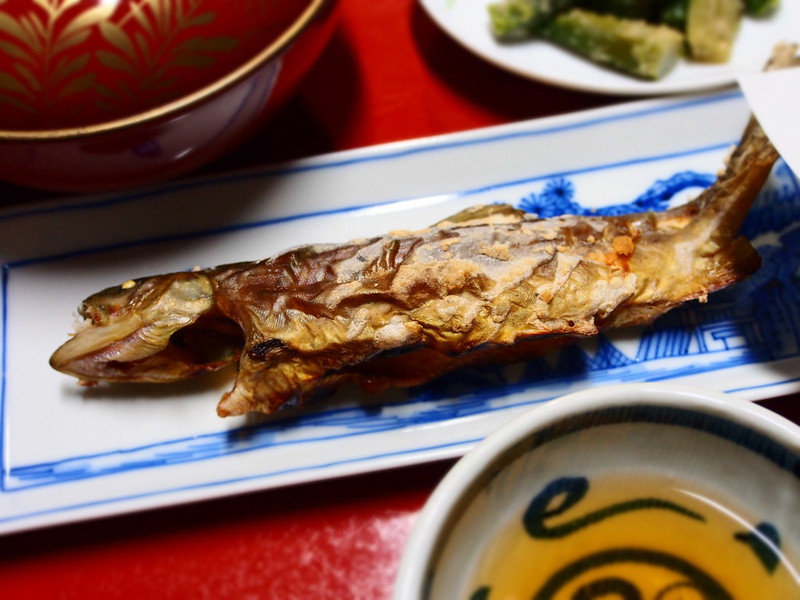
Equally interesting was koi (carp) sashimi. Usually with carps, you could taste the 'dirty'/muddy taste of the fish, as generaly they live in muddy waters. However, the carps from this area live in incredibly clean waters that they taste very clean too.
Although it was a great experience, I am not a fan of this, as it does not have the usual sweetness of the fish normallly consumed as sashimi
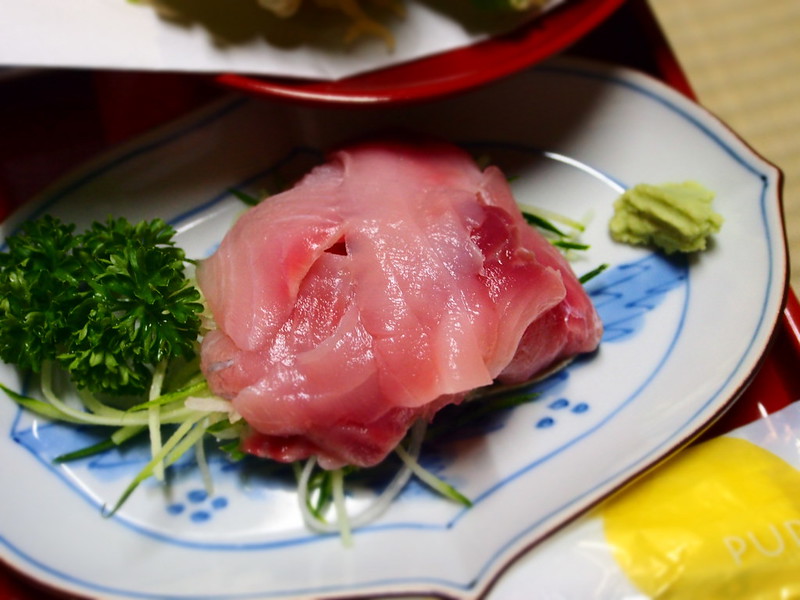
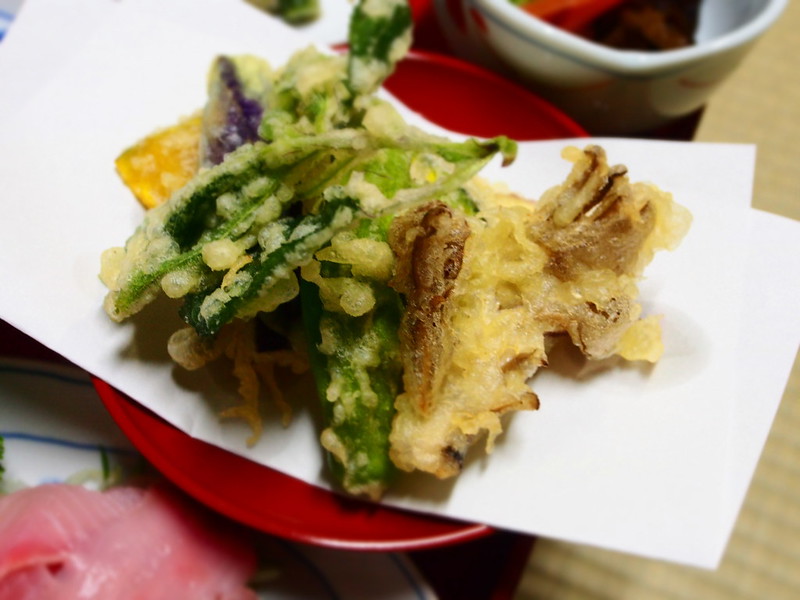

And thus, I close today's post with night-shots.
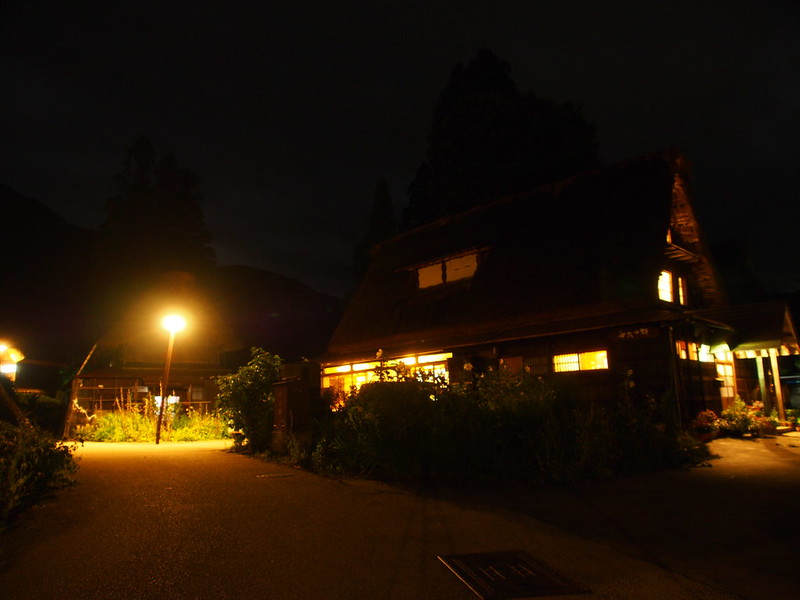

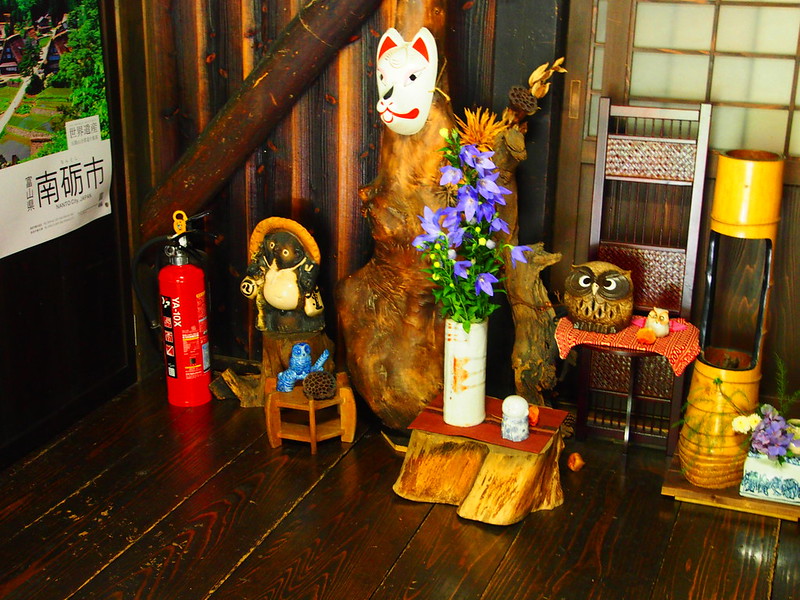
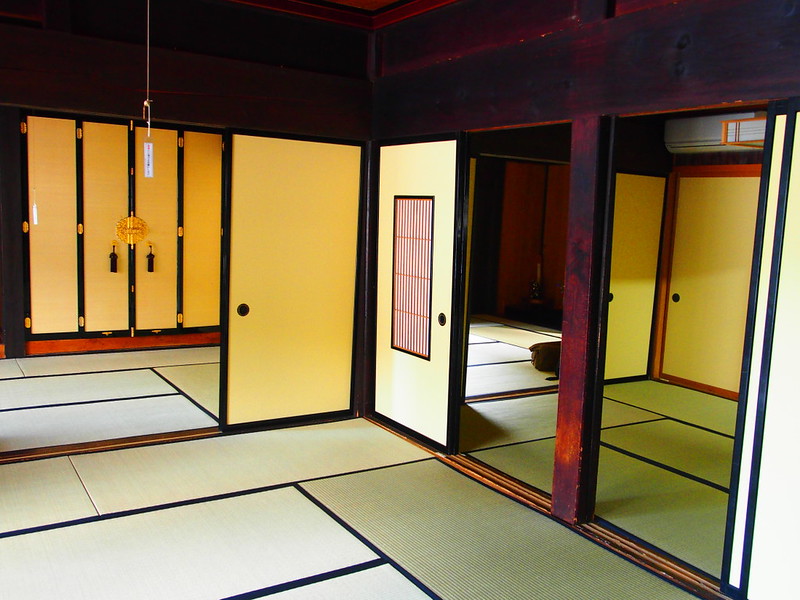
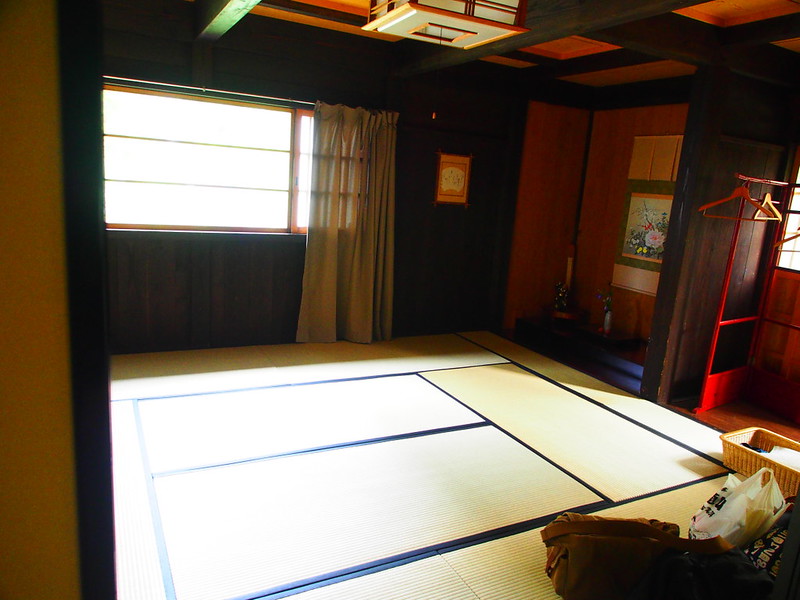
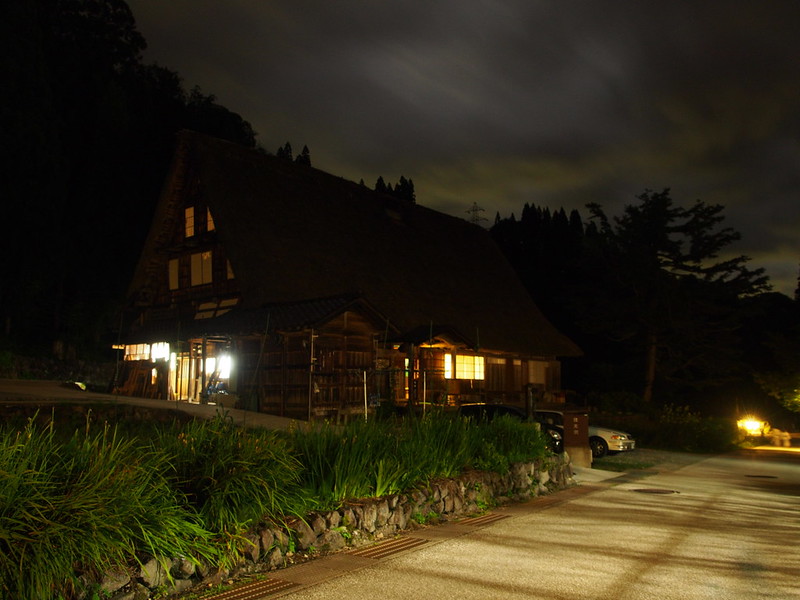

No comments:
Post a Comment